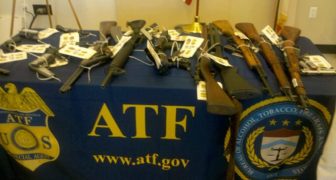This is a guest post by Andrew Betts
Not long ago, we wrote about why you might want to consider body armor in addition to a firearm and training as part of your home defense plan. Choosing body armor is a complicated prospect, though. There are a staggering array of choices and almost as many factors to consider. This article is not going to make that choice any easier, but it might illuminate some differences that you had not already considered. The first thing that many people consider when choosing armor is NIJ threat rating and the second is often price. If those were the only two important factors, the choice would be fairly easy: find the highest threat level you can afford.
It is not quite that simple, though. One should also consider factors such as weight, thickness (will it fit the carrier you want?), and back face signature. Back face signature is the degree to which body armor deforms with the impact of a projectile. It can cause significant blunt force injury even if the bullet does not perforate the armor. The NIJ specifies a limit of 44mm, or 1.73” of back face signature and the degree of deformation is measured by placing a block of clay behind the armor and then measuring the depth of the dent left in the clay. As an extreme example of what back face deformation can do, take a look at what happens when you shoot a Highcom 3S9 ceramic level III body armor plate with .450 Marlin, which is ballistically similar to the legendary .45-70.
It is clear that the impact of that big bore cartridge left a tremendous cavity in the clay that would almost certainly have resulted in serious injury for anyone wearing that armor. This does not mean that the plate is in any way substandard. The 3S9 is an excellent plate that performs admirably within its design limits. The cartridge tested is not something for which the plate was designed to offer protection, though. The only reason this test is referenced is as a worst case example of what extreme back face deformation can look like.
It is worth noting that the Spartan level III+ Armaply with the same NIJ rating was able to stop the same round with virtually zero back face deformation, though
If back face signature was the only dimension to consider, the steel plate seems a far better choice. It is substantially heavier than the ceramic plate, though. That may not seem important, but ounces make pounds and pounds make pain when you have to wear the armor all day for a training class or during a period of civil disorder. If you are only purchasing armor to use in the event of home invasion, you might be thinking that the weight doesn’t particularly matter. Why not choose the one with less back face deformation? They protect against the same threats, right? That might be a solid decision if the premise were correct, but these two plates do not protect against the same threats. First, we should be clear that a plate that fails the back face signature does not, in fact, protect against the threat, even if there was no actual perforation. Just because two plates have the same NIJ rating might not necessarily mean they will prevent perforation by all the same threats, though.
In the above test, the same Highcom 3S9 ceramic level III plate stops the Army’s new M855A1 62 gr EPR when fired from both a 16” and a 22” barrel. The plate is not rated for this ammunition, of course, but it appears to have little trouble stopping it. Conversely, the Spartan level III+ Armaply, which is also not rated for M855A1 could not stop the round when fired from a 20” barrel.
How can this be? How can these two plates, which have the same threat rating perform so differently? The plates are engineered for different priorities and with different materials. The threat ratings are the same, but all that means is that both will stop 7.62x51mm M80 FMJ at 2,780 fps. Consumers often take that to mean that the plate will stop everything “up to” that threat, but the problem is that there really is no such hierarchy when it comes to firearm cartridges. The .450 Marlin had far less velocity than M80 but much more mass and the M855A1 was much faster and also constructed with a hardened penetrator tip.
None of this should be taken to conclude that either of these plates is categorically superior to the other. They fit different needs. These tests were chosen to illustrate some of the differences between armor that are often overlooked, not to imply that one or the other is a better choice. As you consider various types of personal body armor, you should make your own assessment of which factors hold the highest priority for you. Only you can determine which product will fit your unique use case best. As always, training and a warrior mindset is far more important than any gear choice.
Andrew Betts served with the Arizona National Guard for over 12 years, including a tour to Afghanistan. Visit his YouTube Channel for more great shooting information.
Photo credit – The Wound Channel on YouTube


Speak Your Mind